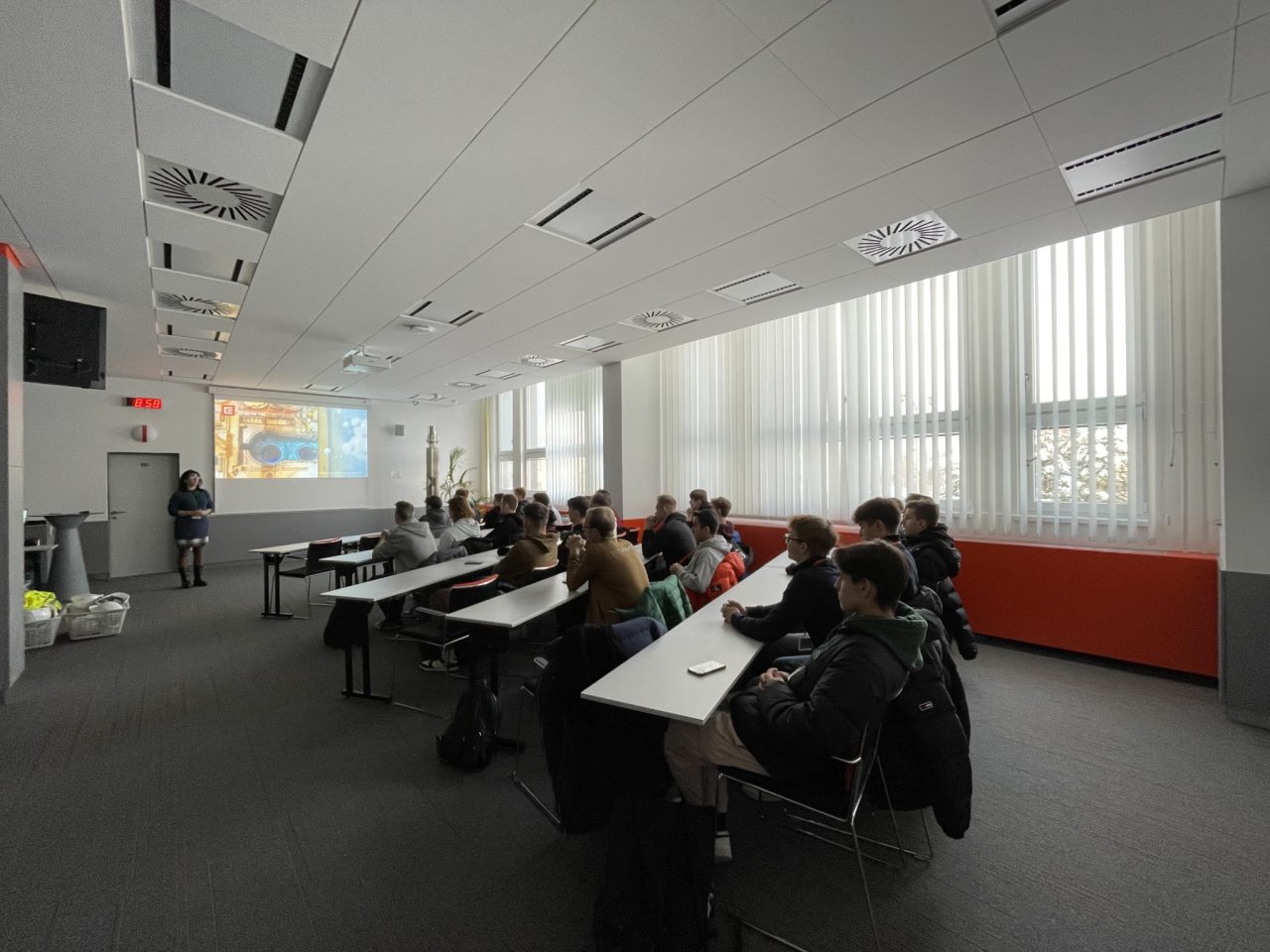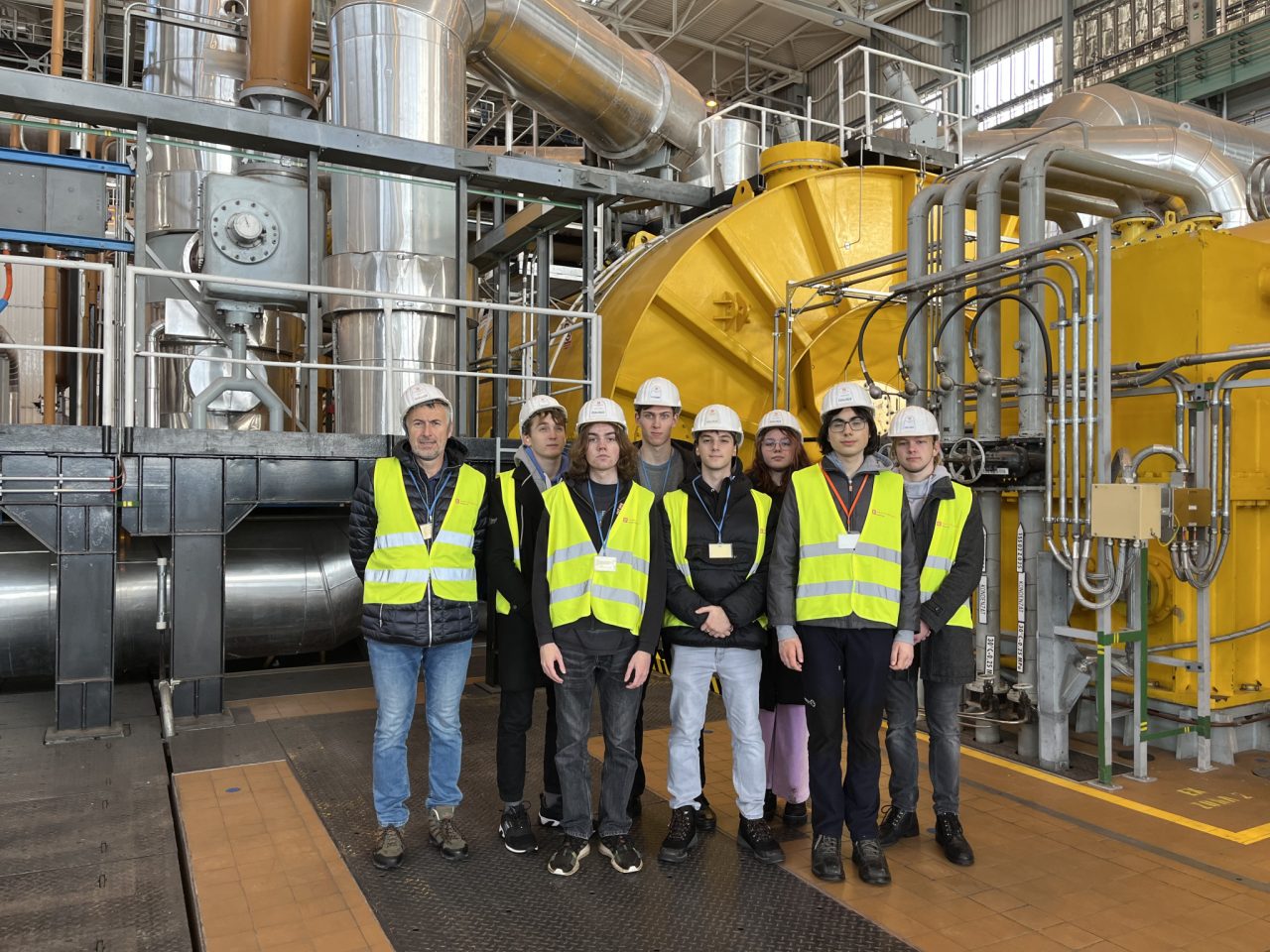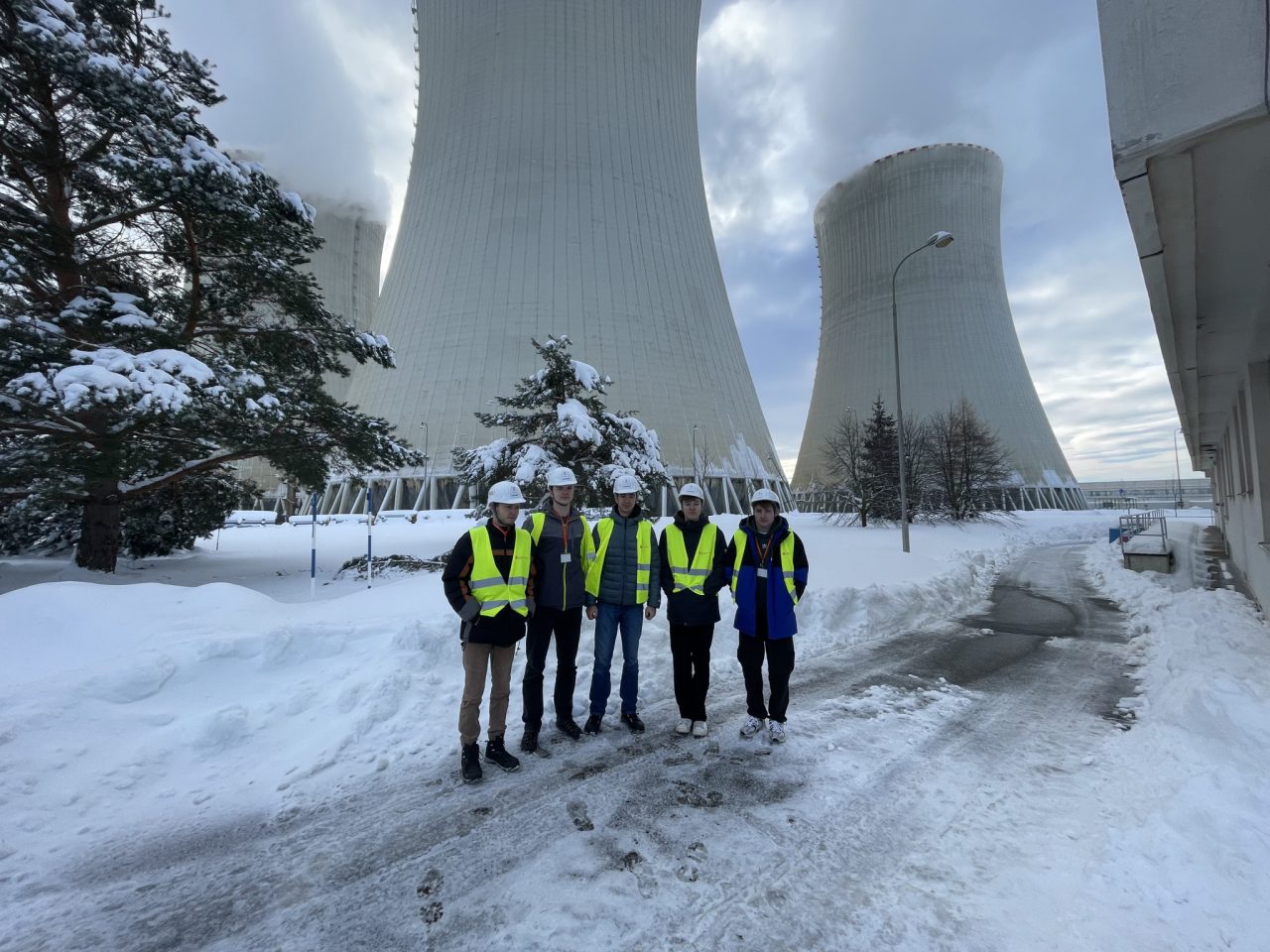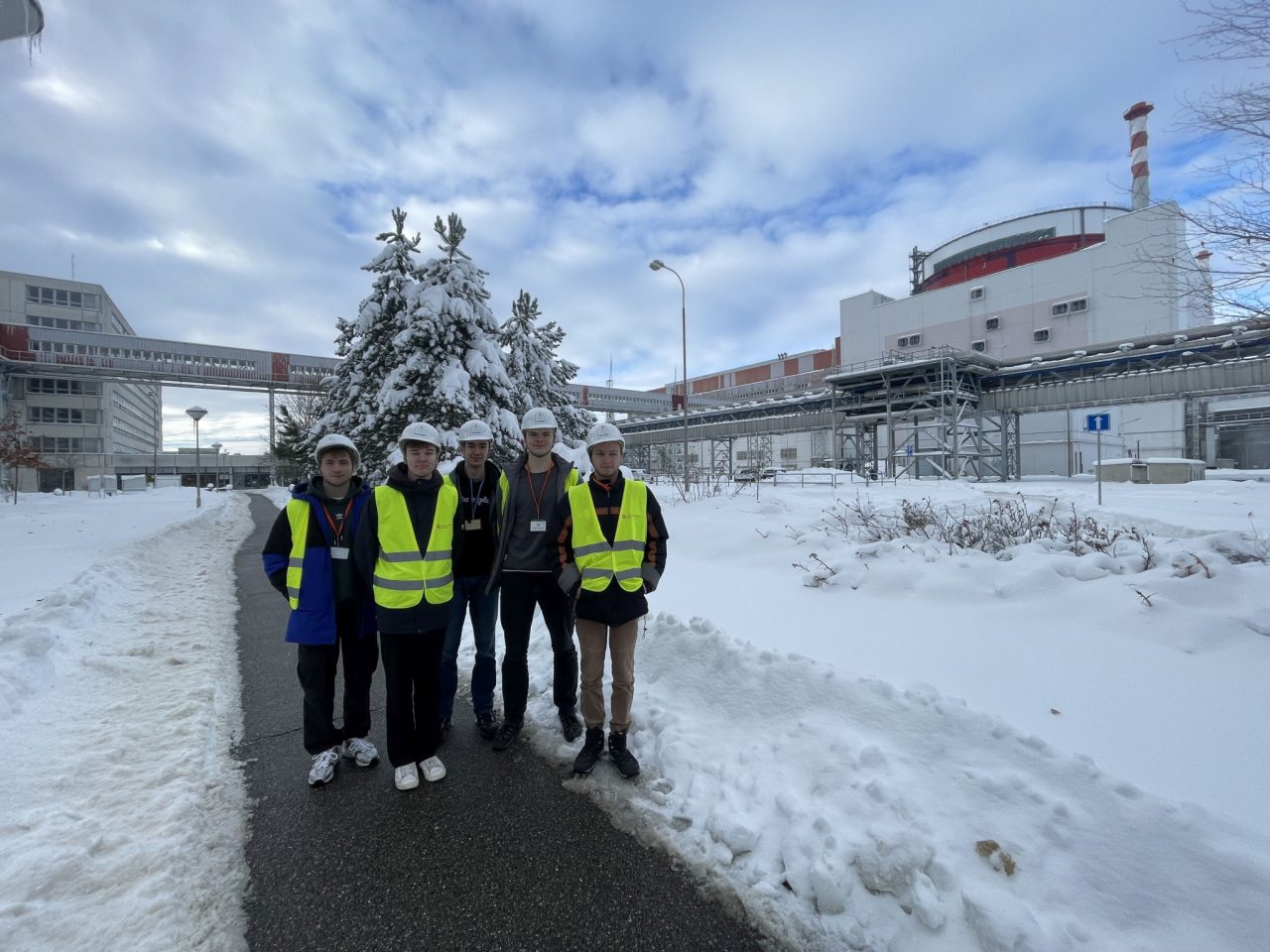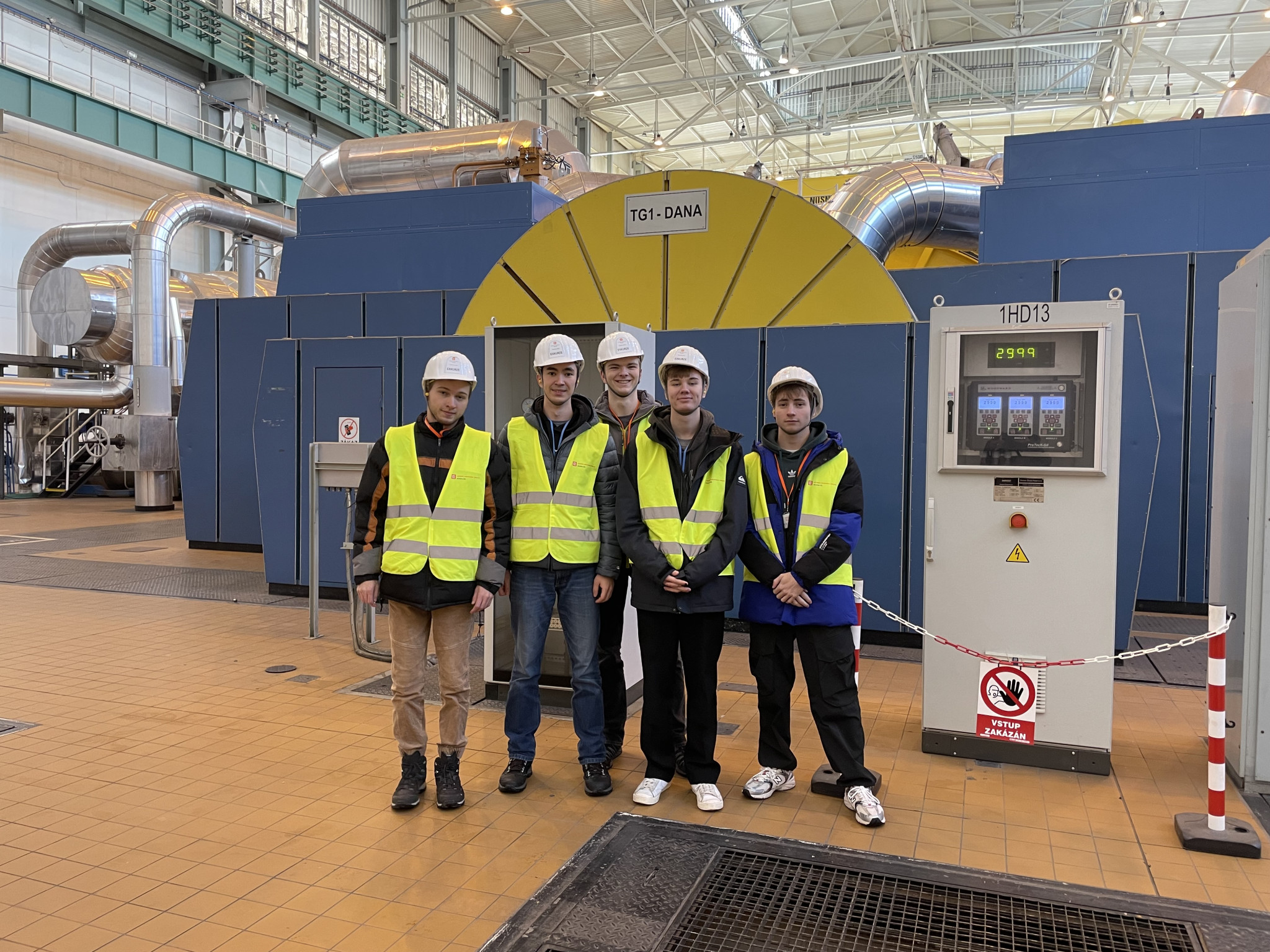
Due to the large amount of snow, the excursion started on 5 and 6 December directly at the main JETE building, and on 7 and 8 December at the information centre at Vysoký Hrádek Chateau. The students visited the engine room, toured the outdoor area of the plant, saw a faithful replica of the control room and visited places where they were not allowed to enter at least through virtual reality.
After arriving at Temelín NPP, we went through the entrance gate to the meeting room. Here the class was divided into three groups, i.e. so that a smaller number of students always entered the strictly guarded and controlled area of JETE. Only one group could enter the guarded area at a time. The second one was at the JETE simulator and the third one stayed in the meeting room for an explanation about the history of JETE and then a virtual tour. The virtual tour showed the students what it is like inside the nuclear power plant, especially in the buildings where only authorised personnel are allowed to enter.
Before visiting the JETE guarded objects we were equipped with warning vests and safety helmets. First, we visited the JETE Block Control Room simulator, where training and education of new operators takes place. Here the students had the opportunity to see the full set of controls needed to operate both the primary and secondary JETE circuits. They also learnt a number of interesting facts - for example, that each operator first starts as a secondary circuit operator and only if they prove themselves can they move to the primary circuit after a few years. Every applicant for a JETE operator's job must have a university degree in a technical field.
After the end of the tour of the simulator, we moved to the guarded area. Each group was accompanied by a guide and a member of JETE security. All visitors have to pass through a control frame which verifies that the person does not bring any illegal items into the facility. Afterwards, each person has to undergo a measurement of the radioactivity brought in to verify how much of their own radioactive footprint they are entering the facility with. Each person's level of radioactivity is also checked on leaving the high security area.
After a short walk, we reached the dominant feature of the whole complex, which consists of four 155 m high cooling towers. These are currently operating in so-called winter operation (a type of operation where the air temperatures are below freezing), as it is necessary to prevent the formation of huge icicles that would form on the walls of the cooling towers from the flowing cooling water.
From the cooling towers, we made our way to the containment of nuclear unit number one. The containment is a reinforced concrete structure with 1.5 m thick walls that surrounds the reactor vessel and is supposed to protect the reactor from all possible problems, even a plane crash. Inside, there is a block headquarters. We also saw the storage of unused reactor fuel and the intermediate spent fuel storage. All of these buildings we've only seen from the outside. During the tour, the students learned, among other things, that all the stacks throughout the site are for ventilation only, JETE does not produce any fumes. We also visited the transformer station, where the 24kV output voltage from the generators is transformed to 110 KV and then routed via a long-distance line to the Kočín substation, where part of the power is further transformed to 400kV for transmission via the North-South Main Line.
We then entered one of the covered bridges that connect all the important buildings in the complex. From the bridge, we had a beautiful view of the machinery rooms of the backup diesel electric generators. These are regularly tested every month to ensure that they are working properly. They would be needed in the event of an accident so that the pumps and control systems are not left without power. We then came to the entrance to the turbine hall. Here, the security guard who had accompanied us throughout the tour had to ask the control room to open a passageway so that we could enter the corridor leading to the turbines and generator. There is a lot of noise at these, so it is recommended to wear ear defenders, which are available to everyone. Then the huge engine room opened up in front of us, which is made up of over 70 %'s of domestic manufacture. As the turbine spins at 3,000 rpm, the tens of tons heavy colossus vibrates slightly. It is therefore housed on a separate platform from the rest of the engine room, which consists of the huge boilers, water separators, heaters, coolers and other technology required for the flawless operation of the high and low pressure parts of the turbine and the power generator mounted on it on a single axis. This is also the starting point of the hot water pipeline, which began this year to help heat part of České Budějovice.
Then we left this large hall through another controlled exit and went down from the covered bridge again. On the way past the backup diesel generators, we saw that there was still plenty of room at the back of unit number two for the eventual construction of a new unit or for the construction of a modular unit to test it. If a new unit were to be built, it would be a completely different technology and would create a new nuclear power plant that would be completely separate from the current one.
We made our way back to the entrance building, where we again measured our radiation one by one. This is also where our guide from the JETE security left us. In the meeting room we returned our reflective vests and hard hats.
Thank you for a very interesting and informative excursion!
(Ing. Lubomír Krejsa)
